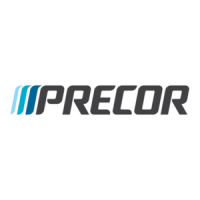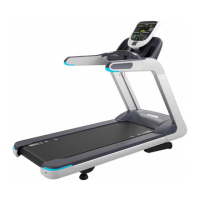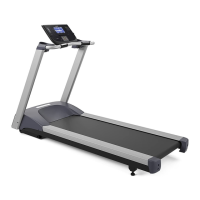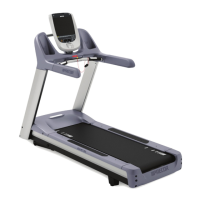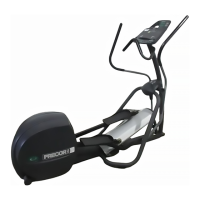© Precor Incorporated, Unauthorized Reproduction and Distribution Prohibited by Law Page 65
ASL – Yellow Solid
Description
The lift control system has detected that the lift is moving in the opposite direction of the issued
lift command.
Possible Causes
3. Lift motor hysteresis
4. Miswired lift connector
5. Motor Controller hardware fault
Possible Remedies
1. Lift motor hysteresis would typically happen when the lift was already in motion (typically
downward) when a lift command in the opposite direction (lift up) was issued.
2. This would most likely happen when the lift motor is new, or replaced. Verify the connector
wiring. If this wiring is correct in the connector, replace the motor.
3. Check if the Motor Controller is properly controlling the lift motor – if the MC is always
energizing the same coil, or not energizing any coils at all, replace the MC.
Troubleshooting Communications Errors
Errors 30 and 32 - Communications Error between Upper and Lower Boards
MCL – Yellow
ASL – Yellow Solid
Description
Errors 30 and 32 indicate the loss of communications or intermittent communications between
the microprocessors in the upper PCA and the lower PCA. The trouble shooting procedures for
all of the communication errors are essentially the same.
Error 30 is defined as upper PCA not receiving from lower PCA.
Error 32 is defined as lower PCA not receiving from upper PCA.
Possible Causes
1. The connector for the Data cable is not seated correctly
2. An upper PCA to lower PCA Data cable is bad
3. The interconnect cable at the upper PCA was mistakenly plugged into the CSAFE connector
4. Contact corrosion at connector/header
Possible Remedies
1. Inspect the cable for damage, both along the cable and on the connectors. Ensure locking
tabs are intact and working.
2. Substitute a know good interconnect cable between the upper and lower PCAs to determine
if the interconnect cable is defective.

